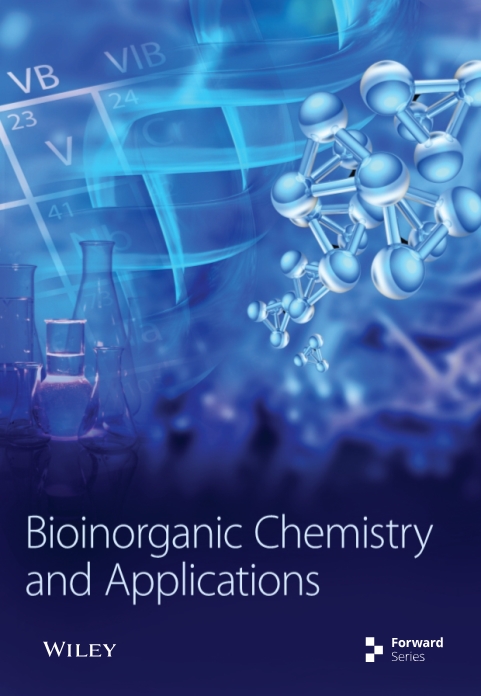具有可控晶体类型和纳米形貌的二氧化钛纳米涂层在氧化锆植入物上加速骨形成
IF 4.7
3区 化学
Q1 BIOCHEMISTRY & MOLECULAR BIOLOGY
引用次数: 0
摘要
在牙科领域,氧化锆种植体因其优越的美观性能和化学稳定性而成为替代缺牙的一种很有前途的选择。为了提高氧化锆种植体的骨整合性,利用微纳米结构和生物活性化学成分修饰氧化锆种植体的表面是两种有效的方法。本研究采用氢氟酸蚀刻法在氧化锆表面制备微尺度形貌,然后采用原子层沉积法(ALD)沉积50 nm的TiO2纳米涂层。随后,采用退火处理将TiO2从无定形转变为锐钛矿,同时生成纳米级形貌。利用扫描电子显微镜、白光干涉测量、接触角测量、x射线衍射和x射线光电子能谱对涂层表面形貌、形貌、润湿性和化学成分进行了各种研究。此外,利用人骨髓间充质干细胞(hBMSCs)评估涂层的体外细胞相容性和成骨潜能性能,并在大鼠股骨髁模型中评估涂层的体内骨整合性能。并对其可能的机理进行了探讨。退火前后沉积的TiO2薄膜对氧化锆表面的微尺度粗糙度没有影响,而退火后的纳米形貌发生了显著变化。体外研究表明,具有规则波状纳米结构的锐钛矿型TiO2涂层可促进成骨细胞的粘附和增殖,进一步提高体外成骨潜能和体内骨整合能力。这些积极作用可能是通过典型的Wnt/β-catenin途径由纳米级地形引起的。结果表明,利用ALD结合退火处理制备纳米TiO2涂层是改善氧化锆植入体成骨性能的一种很有前途的方法。本文章由计算机程序翻译,如有差异,请以英文原文为准。
TiO2 Nanocoatings with Controllable Crystal Type and Nanoscale Topography on Zirconia Implants to Accelerate Bone Formation
In dentistry, zirconia implants have emerged as a promising alternative for replacing missing teeth due to their superior aesthetic performance and chemical stability. To improve the osseointegration of zirconia implants, modifying their surface with hierarchical micro/nanotopography and bioactive chemical composition are two effective ways. In this work, a microscale topography was prepared on a zirconia surface using hydrofluoric acid etching, and then a 50 nm TiO2 nanocoating was deposited via atomic layer deposition (ALD). Subsequently, an annealing treatment was used to transform the TiO2 from amorphous to anatase and simultaneously generate nanoscale topography. Various investigations into the coating surface morphology, topography, wettability, and chemical composition were carried out using scanning electron microscopy, white light interferometry, contact-angle measurement, X-ray diffraction, and X-ray photoelectron spectroscopy. In addition, in vitro cytocompatibility and osteogenic potential performance of the coatings were evaluated by human bone marrow mesenchymal stem cells (hBMSCs), and in vivo osseointegration performance was assessed in a rat femoral condyle model. Moreover, the possible mechanism was also investigated. The deposition of TiO2 film with/without annealing treatment did not alter the microscale roughness of the zirconia surface, whereas the nanotopography changed significantly after annealing. The in vitro studies revealed that the anatase TiO2 coating with regular wavelike nanostructure could promote the adhesion and proliferation of osteoblasts and further improve the osteogenic potential in vitro and osseointegration in vivo. These positive effects may be caused by nanoscale topography via the canonical Wnt/β-catenin pathway. The results suggest that using ALD in combination with annealing treatment to fabricate a nanotopographic TiO2 coating is a promising way to improve the osteogenic properties of zirconia implants.
求助全文
通过发布文献求助,成功后即可免费获取论文全文。
去求助
来源期刊

Bioinorganic Chemistry and Applications
化学-生化与分子生物学
CiteScore
7.00
自引率
5.30%
发文量
105
审稿时长
>12 weeks
期刊介绍:
Bioinorganic Chemistry and Applications is primarily devoted to original research papers, but also publishes review articles, editorials, and letter to the editor in the general field of bioinorganic chemistry and its applications. Its scope includes all aspects of bioinorganic chemistry, including bioorganometallic chemistry and applied bioinorganic chemistry. The journal welcomes papers relating to metalloenzymes and model compounds, metal-based drugs, biomaterials, biocatalysis and bioelectronics, metals in biology and medicine, metals toxicology and metals in the environment, metal interactions with biomolecules and spectroscopic applications.
 求助内容:
求助内容: 应助结果提醒方式:
应助结果提醒方式:


